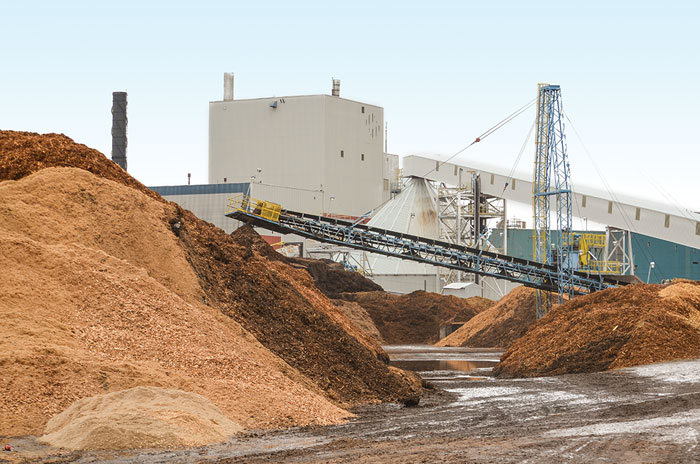Even before the Government of Nova Scotia introduced its Renewable Energy Plan in April 2010, Nova Scotia Power understood the opportunity that was in front of it at Point Tupper.
It was 2009 when the original project was conceived, recognizing that the biomass boiler at the Point Tupper site had been underutilized by NewPage. Stora had installed the system in 1983 as a way to burn excess bark and spruce budworm-killed wood.
The initial agreement negotiated with NewPage stated that Nova Scotia Power (NSP) would absorb the entire capital cost of the project, pegged at $208 million, with NewPage providing the personnel to operate the facility.
But in 2011, amidst the continued decline for demand of paper products on a global scale, NewPage filed for CCAA protection. CCAA (Companies’ Creditors Arrangement Act) allows companies owing a minimum of $5 million to creditors to restructure its business and financial affairs while avoiding bankruptcy. The mill shut down in September, forcing NSP to re-evaluate the merits of the Point Tupper project without having the NewPage infrastructure in place.
After careful consideration the project was re-started independent of NewPage’s involvement. Shortly thereafter, the mill was sold to Pacific West Commercial Corp., and the mill was re-started in October of 2012 with the supercalendared paper and thermomechanical pulp lines in operation.

The plant consumes up to 2,000 green tonnes daily.
Moving Forward
The boiler potential and the need for firm, consistent renewables to meet the targets of the Renewable Energy Plan were driving the $208 million investment forward. That was then complemented by successful negotiations with the new tenant, operating the mill as Port Hawkesbury Paper, for both the sale of steam, and fuel management throughout the site.
The $208 million investment included three basic components. The single largest investment was the construction of the turbine hall and the installation of the turbine. The 150 tonne steam turbine was built by Mitsubishi Heavy Industries at its facility in Yokohama, Japan, and was delivered to the site in April 2012.
A second truck dumper and chip silo were necessary for primary biomass handling, along with the associated conveyors and secondary infrastructure necessary.
There was also the need for a significant modification of the boiler. The boiler was originally designed for an output of 60 kg/sec of oil and gas, but only 40 kg/sec when using biomass. Upgrading the boiler to the desired 60 kg/sec output using biomass meant bigger drives for the ID fans, as well as reinforcement of the duct work to handle the higher air flows.
The 60 kg/sec output is equal to the 60 MW of power that NSP wants to be able to generate at capacity. According to NSP, 60 MW will provide the power needed for approximately 50,000 homes. However, there are also the demands of Port Hawkesbury Paper to take into account, which uses approximately 25% of the produced power when the mill is operating at capacity. Overall, the entire power production represents as much as 3.5% of the province’s power-generation needs.